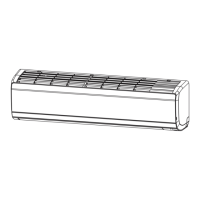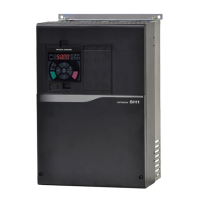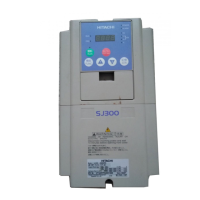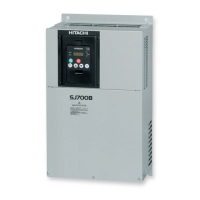S1 series standard inverter
-181-
Code system
• 1 start bit
• 7 or 8 data bits; the minimum valid bit is transmitted first. Each frame domain of 8 bits includes 2
hexadecimal characters (0–9, A–F).
• 1 odd/even check bit; this bit is not provided if no check is needed.
• 1 end bit (with check performed), 2 bits (without check)
Error detection domain
• Cyclic redundancy check (CRC)
The following table describes the data format.
11-bit character frame (Bits 1 to 8 are data bits)
10-bit character frame (Bits 1 to 7 are data bits)
In a character frame, only the data bits carry information. The start bit, check bit, and end bit are used
to facilitate the transmission of the data bits to the destination device. In practical applications, you
must set the data bits, parity check bits, and end bits consistently.
In RTU mode, the transmission of a new frame always starts from an idle time (the transmission time
of 3.5 bytes). On a network where the transmission rate is calculated based on the baud rate, the
transmission time of 3.5 bytes can be easily obtained. After the idle time ends, the data domains are
transmitted in the following sequence: slave address, operation command code, data, and CRC
check character. Each byte transmitted in each domain includes 2 hexadecimal characters (0–9, A–F).
The network devices always monitor the communication bus. After receiving the first domain (address
information), each network device identifies the byte. After the last byte is transmitted, a similar
transmission interval (the transmission time of 3.5 bytes) is used to indicate that the transmission of
the frame ends. Then, the transmission of a new frame starts.
RTU data frame format
Modbus packet
Start with an idle time (at
least the transmission
time of 3.5 bytes)
Slave
address
Function
code
Data Check
End with an idle time (at
least the transmission
time of 3.5 bytes)
The information of a frame must be transmitted in a continuous data flow. If there is an interval greater
than the transmission time of 1.5 bytes before the transmission of the entire frame is complete, the
receiving device deletes the incomplete information, and mistakes the subsequent byte for the
address domain of a new frame. Similarly, if the transmission interval between two frames is shorter
than the transmission time of 3.5 bytes, the receiving device mistakes it for the data of the last frame.
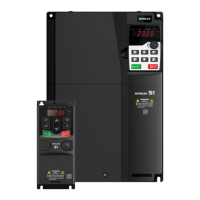
